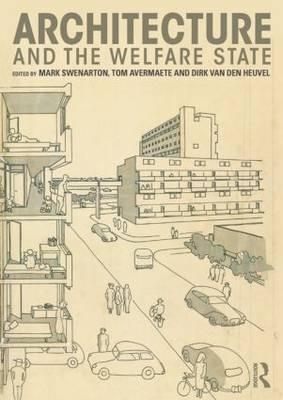Architecture and the Welfare State

Architecture and the Welfare State
This is the first book to explore the architecture of the welfare state in Western Europe from an international perspective. With chapters covering Austria, Belgium, France, Germany, Italy, The Netherlands, Sweden and the UK, the book explores the complex role played by architecture in the formation and development of the welfare state in both theory and practice.
Themes include:
the role of the built environment in the welfare state as a political project
the colonial dimension of European welfare state architecture and its `export' to Africa and Asia
the role of welfare state projects in promoting consumer culture and economic growth
the picture of the collective produced by welfare state architecture
the role of architectural innovation in the welfare state
the role of the architect, as opposed to construction companies and others, in determining what was built
the relationship between architectural and social theory
the role of internal institutional critique and the counterculture.
Contributors include: Tom Avermaete, Eve Blau, Nicholas Bullock, Miles Glendinning, Janina Gosseye, Hilde Heynen, Caroline Maniaque-Benton, Helena Mattsson, Luca Molinari, Simon Pepper, Michelle Provoost, Lukasz Stanek, Mark Swenarton, Florian Urban and Dirk
PRP: 489.51 Lei
Acesta este Pretul Recomandat de Producator. Pretul de vanzare al produsului este afisat mai jos.
440.56Lei
440.56Lei
489.51 LeiIndisponibil
Descrierea produsului
This is the first book to explore the architecture of the welfare state in Western Europe from an international perspective. With chapters covering Austria, Belgium, France, Germany, Italy, The Netherlands, Sweden and the UK, the book explores the complex role played by architecture in the formation and development of the welfare state in both theory and practice.
Themes include:
the role of the built environment in the welfare state as a political project
the colonial dimension of European welfare state architecture and its `export' to Africa and Asia
the role of welfare state projects in promoting consumer culture and economic growth
the picture of the collective produced by welfare state architecture
the role of architectural innovation in the welfare state
the role of the architect, as opposed to construction companies and others, in determining what was built
the relationship between architectural and social theory
the role of internal institutional critique and the counterculture.
Contributors include: Tom Avermaete, Eve Blau, Nicholas Bullock, Miles Glendinning, Janina Gosseye, Hilde Heynen, Caroline Maniaque-Benton, Helena Mattsson, Luca Molinari, Simon Pepper, Michelle Provoost, Lukasz Stanek, Mark Swenarton, Florian Urban and Dirk
Detaliile produsului








